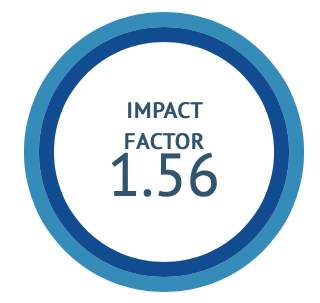The Incidence of Stroke with Different BMI Ranges in Diabetic Patients
DOI:
https://doi.org/10.47552/ijam.v14i1.3351Keywords:
Stroke, Different BMI ranges, Diabetes, Diabetic Patients, BMIAbstract
Introduction: Identifying the risk factors of stroke as an initial prevention is the best step to prevent it from happening. One of the risk factors for stroke in diabetic patients seems to be the presence of high BMIs in these patients, so given the importance of this issue and that little studies have been done so far, this 7 -year study on files has been done. Diabetic patients in Behbahan were performed with the aim of determining the incidence of stroke with different BMI areas in diabetic patients.
Materials and Methods: In this study, which examines 1714 patients with diabetes and a detailed cross -sectional descriptive study. The case of these patients, which was diagnosed with diabetes and history of the disease and referred to Shahidzadeh Hospital in Behbahan from 2014 to 2020, was extracted in the medical evidence of the hospital. In this study, the demographic and clinical information of patients. The data then entered the SPSS 17 software and used the descriptive statistics tests of the metaphor, mean, standard deviation and variance and analytical tests and analytical tests, Anova, Pearson and a significant level p <0/ 05 were analyzed.
Results: This study consisted of 1714 people with diabetes with an average age of 18.62 ± 58.56 years. Of these, 984 (57.4 %) were male and the rest were females. In the present study, 314 people (18.3 %) had a history of stroke. Of which 26 (8.2 %) have BMI between 25.5, 51 (16.2 %) with BMI more than 25 and less than 30, 71 (22.6 %) with BMI in 30-35, 77 (24.5 %) It had BMI between 35 and 40, and 89 (28.3 %) had a BMI of more than 40. In this study, a statistical relationship was found between BMI levels and a history of stroke (P = 0.008), with patients with higher BMIs more likely to have a stroke.
Conclusion: In this study, a statistical relationship was found between BMI levels and a history of stroke (P = 0.008), as patients with higher BMI had a higher incidence of stroke. Therefore, given the relationship between BMI and stroke, it is necessary to give diabetic and high BMI patients at risk of stroke, training necessary weight loss and healthy diet with proper diet. Further studies are also needed to investigate the risk of stroke factors.
Keywords: Stroke, Different BMI ranges, Diabetes, Diabetic Patients, BMI
Downloads
Published
How to Cite
Issue
Section
License
Copyright (c) 2023 International Journal of Ayurvedic Medicine

This work is licensed under a Creative Commons Attribution 4.0 International License.
The author hereby transfers, assigns, or conveys all copyright ownership to the International Journal of Ayurvedic Medicine (IJAM). By this transfer, the article becomes the property of the IJAM and may not be published elsewhere without written permission from the IJAM.
This transfer of copyright also implies transfer of rights for printed, electronic, microfilm, and facsimile publication. No royalty or other monetary compensation will be received for transferring the copyright of the article to the IJAM.
The IJAM, in turn, grants each author the right to republish the article in any book for which he or she is the author or editor, without paying royalties to the IJAM, subject to the express conditions that (a) the author notify IJAM in advance in writing of this republication and (b) a credit line attributes the original publication to IJAM.




